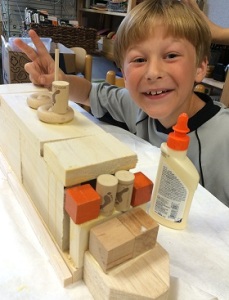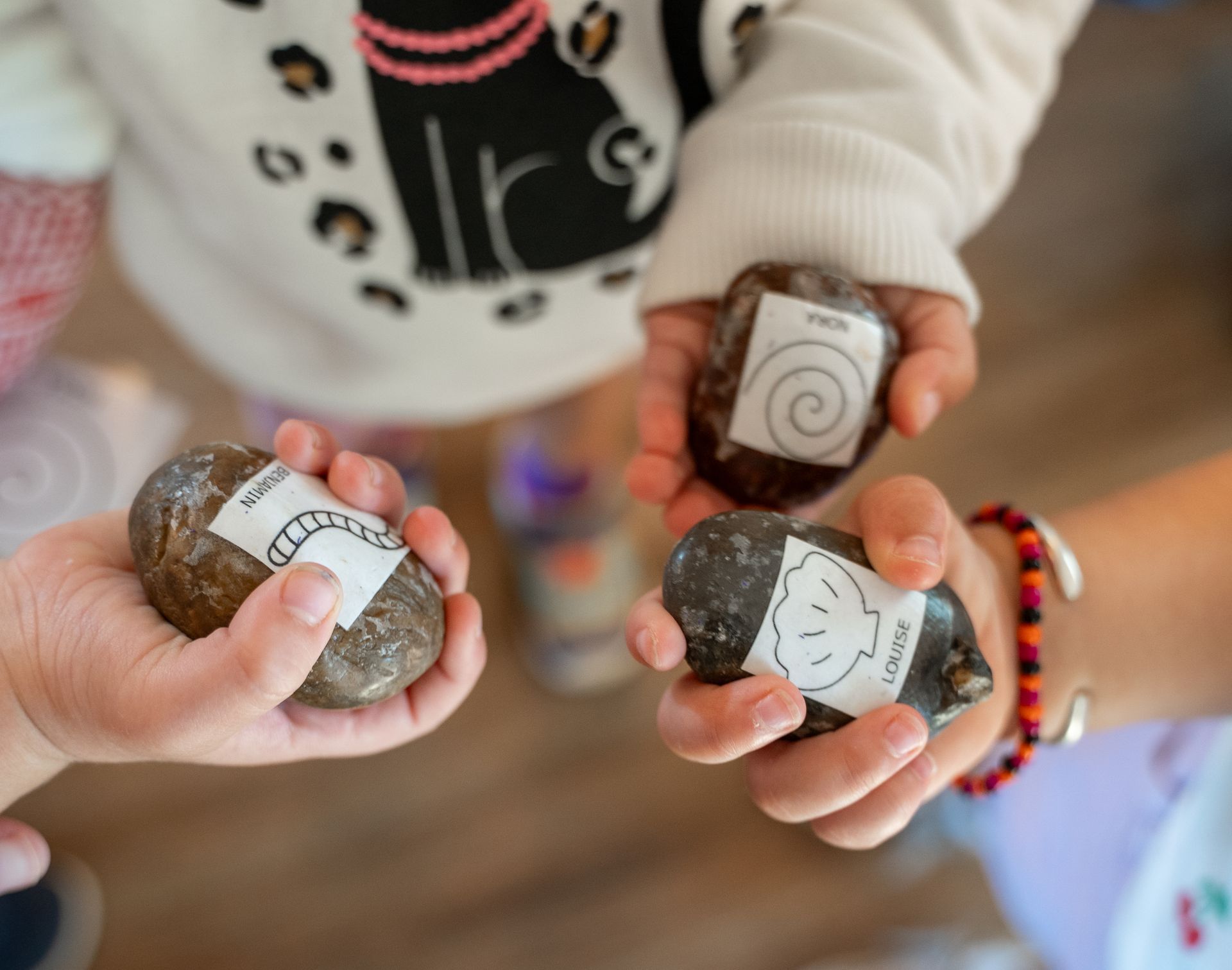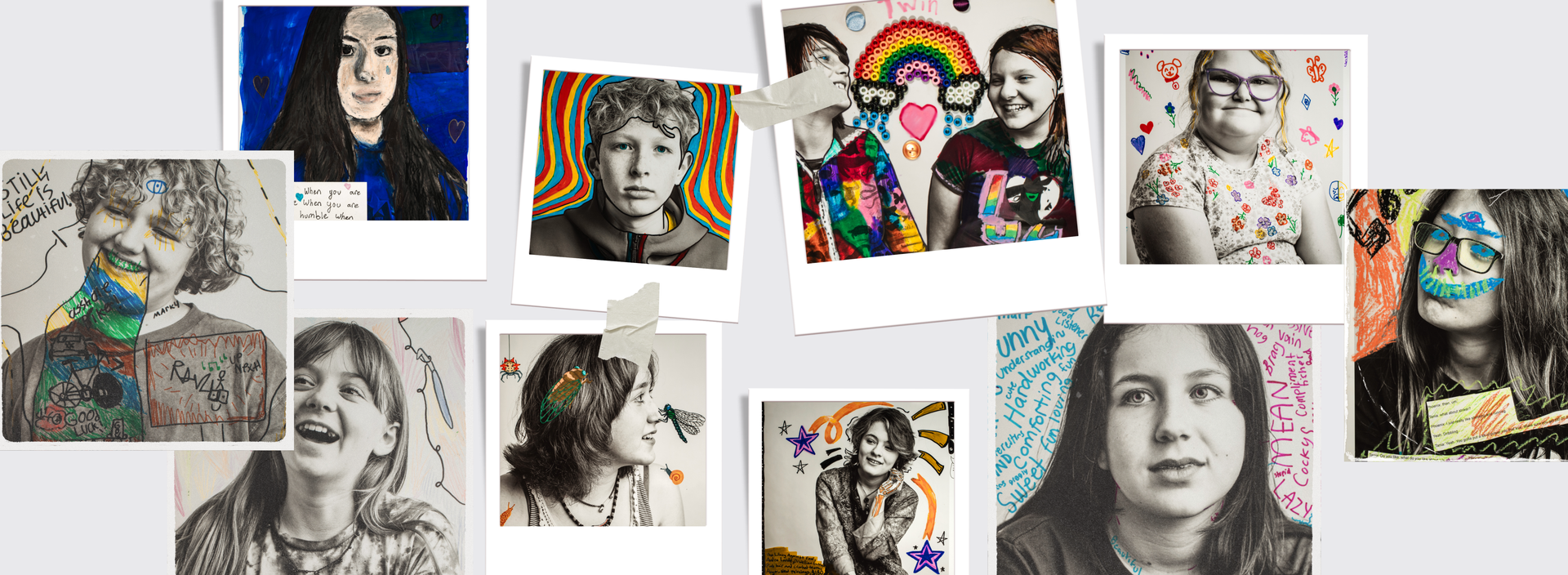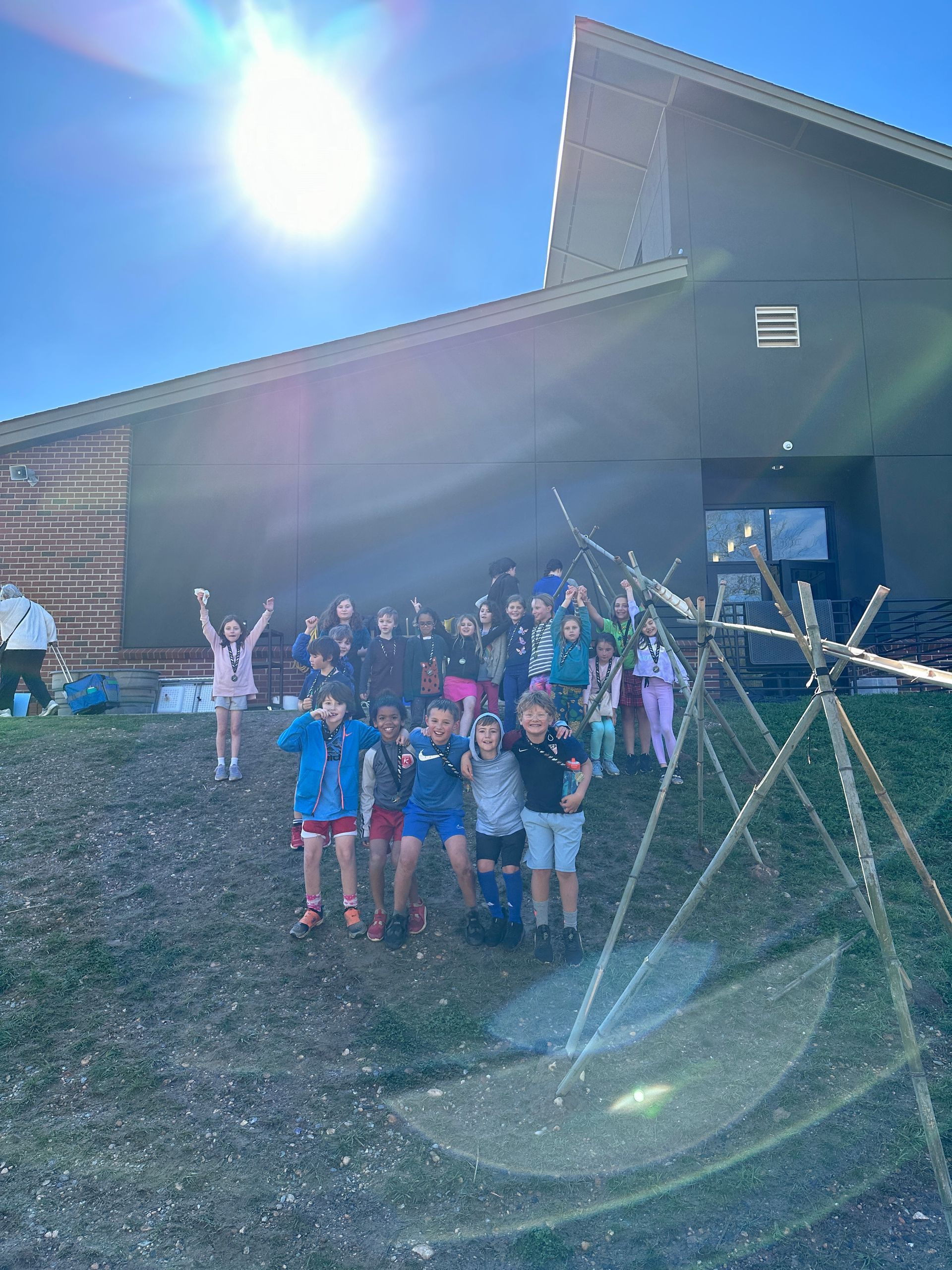Aero(dynamic) Thinking
No sooner had the class gotten deeply immersed in their car making than the annual Sabot Hoedown was upon us. Last year, Sabot preschool parent Rob Paige introduced derby racing to our fall festivities. He kindly donated car kits to the school for students to make derby cars and race them at the Hoedown. While the derby racing idea was in the back of our minds as our students made their cars to test for our Investigative Research project, we did not know that the Hoedown derby race would be reprised again this year…and then it was. This time around, however, Rob was only supplying specs for students, who would be responsible for getting their own materials to make their vehicles.
When we mentioned that the derby race would be happening again this year, we told the children about these changes ( Rob will give you the specs, but then you have to build the car on your own ). By this time, our cars were already in progress, and the children would be unable to reconfigure them to meet Rob’s spec requirements – but Rob did offer up another interesting proposition. If the children wanted to enter their project cars into the derby race ( and they met his specs) they could race them or they could simply take his spec sheet home, make another car at home, and then race it at the derby. This year would also include a design competition. The entries would not even have to move, but would be judged solely on their design and originality. Several of the third graders went home and made secondary cars to race – one student and his brother in kindergarten got second and first place in the racing competition, while another, who had begun work on a huge wooden truck in class, took it home to continue working on it and won second place in the design competition.




Rob graciously came to our classroom to share his building expertise and insights to help us move our project thinking forward. In sharing his knowledge about aerodynamics, he encouraged the children to think about how the shape of a car might affect its performance. Reese had mentioned something about drag during our earlier movement provocations, and again it came up in our conversations. With Rob, they began to understand drag as force, pressure, and friction.

- Rob: What happens when [air] hits something? It’s going to have to deflect and go around it. In designing a car, you need to figure out the best way to fight several forces. What forces are our cars fighting?
- Students: Gravity, friction, weight…
- Rob: [Good] friction on the ground allows us to move forward. The friction of the tires and the ground need to work together.
Lila: We are using the force of our hands [to move the cars] because when we push something we are creating force.
 The children understood that if they could not propel the cars forward with their bodies, gravity could help move the cars along on hills and angled surfaces. Taking into consideration the shape and form of the car, Rob got the children to consider how different designs could affect air flow around the car and make it more – or less – aerodynamic.
The children understood that if they could not propel the cars forward with their bodies, gravity could help move the cars along on hills and angled surfaces. Taking into consideration the shape and form of the car, Rob got the children to consider how different designs could affect air flow around the car and make it more – or less – aerodynamic.

- Rob: If you have more surface area, you have more area for the air to hit. A flat front car has more drag, more wind resistance.
- Gabriella: You could cut part of the corners off.
- Alexander: You could cut [the front of the car] into a triangle form so there will be a point and that point is the only point that gets the pressure on it. A wedge…
- Juliette: You could make a rhombus, or half of a rhombus. The pointy part needs to be in the front. The tip makes it faster. Put a wedge on it to make the air go up.
- Lila: If you have a sharp point at the front of the car, it helps cut the air faster. The surface should be smooth, because if it’s rough, the air will grab onto it.
- Robbie: You could put a curve [on the front]. I was thinking about a fish and I know that fish swim really fast. [Rob later shares that submarines have a “fish-like” curved front too. Lila: I think they got the idea from fish!]
- Skylar: What if you had a big marble car versus a car with a point and wheels…the marble one will go faster.
- Reese: Like a circle with wheels!
- Juliette: A marble is a rounder shape, like a wheel, and it would go faster.
Soon after our discussion, one student decided to make some new adjustments to the front of his car (“my car is long – like a missile;” his car is the blue one below, next to Max H’s vehicle).




Other children decided to go for a longer and skinnier wedge design (top: Max H. and Max P.), while others tried shorter wedge designs (middle: Juliette and Reese). Like Alexander, Reese opted to add some lengths of sculpture wire to the bottom of her car to give it more weight – and hopefully more speed and stability. Others stuck to their original ideas, like Lila, who felt comfortable with her car’s width and blockier front (bottom right).









At long last, the children’s cars were finished, decorated, and ready to go. Before testing them outside, however, the children took a cue from Rob and created their own car spec sheets. They had been studying measurement in math, so this was an authentic way to put their measurement skills to use. Knowing this information about the cars would help the children more purposely consider how the dimensions and design of their cars might affect their performance.




In reviewing their specs, we gleaned the following information our their cars:
- Longest Car: tie: Sam and Alexander (16 inches)
- Shortest Car: tie: Juliet and Gabriella (3 ½ inches long)
- Widest Car: Lila (5 ½ inches)
- Heaviest Car: Sam: 1,724 grams
- Other heavy Cars: Alexander (509 ½ grams), Hunter (515 ½ grams)
- Lightest Car: Max (107 grams)
- Biggest perimeter: Alexander (36 inches)
- Smallest perimeter: Juliet (12 inches)
Looking at this information (your car measurements), can we make prediction about what might happen when we take them out?
- Neil: Heavier matters if it’s a down slope… if [the slope goes] up, then it’s harder to pull up a heavier car. When you go down the heavier car is going to go faster.
- Sam: I think the heavier cars, like mine, might tip over because going down hill on a bumpy road…sometimes there are little holes in the road and a wheel might fall off or it will get stuck in it or it might flip over.
- Max H: If it’s just going down hill and there are no potholes then Sam’s will actually be pretty good. If it’s heavier in the front it might flip over.
- Reese: I think [that] maybe if it’s going too fast the momentum will push it over.
- Neil: If it’s heavier it will stay to the ground because the weight is pulling it to the ground [and] the lighter one would be easier to flip over because it’s light.
- Lila: I think that the bigger one will go slower and a lighter one will go faster but if it’s too light it will pick up too much momentum it might go up in the air a little bit.
The children broke into groups to think about plans for our next steps – the testing phase. What do we still want to know about movement/motion? What do we want to do? To test? To figure out? How will we do it? What will our predictions be? Several big ideas came out of their plans:
- How does the weight of a car affect its performance?
- How will different wheels perform on different tracks – w hich wheels work best on which surfaces?



It was clear they wanted to test their cars out on different tracks/different terrains to consider:
- The challenge/advantages of each surface
- What surface will make a car go faster/further?
- What surface will make a car go slower/not as far?
Left: Skylar: The ball would need weight to beat a car. It can’t be empty. We should test the ball with and without weight.


Left: Sam: I think grass will work with big wheels. There would be more traction to boost your car up. Smaller wheels will not work well. They’ll get caught and the cars will flip. Right: Neil’s prediction: We should test them on different courses. The heavier [the cars are], they won’t go far. The lighter ones will go further.
Below: Xander envisions an obstacle course…

and with that, we were off to the races…
The post Aero(dynamic) Thinking appeared first on Sabot at Stony Point.
SHARE THIS POST

















